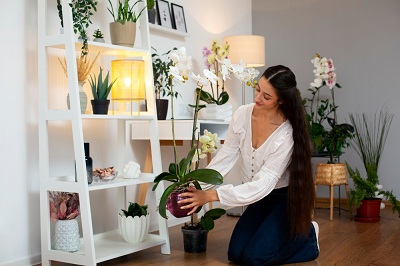Decorating your space is more than just adding a few accessories or a fresh coat of paint; it’s about transforming a blank canvas into a reflection of your personality and style. Whether you’re redecorating a single room or an entire house, the process requires thoughtful planning, creative vision, and careful execution. This ultimate guide will take you through every step, from conceptualizing your design to flawlessly executing it, ensuring that your space becomes a harmonious and stylish environment that suits your needs and tastes.
Step 1: Define Your Concept
Understanding Your Style
Before diving into the world of decoration, it’s essential to understand what style resonates with you. Are you drawn to the clean lines and minimalist aesthetic of modern design, or do you prefer the warmth and charm of rustic decor? Perhaps you find joy in the eclectic mix of bohemian styles or the elegance of traditional interiors. Identifying your style is the first step in creating a cohesive and personalized space.
Creating a Mood Board
A mood board is a visual representation of your design concept. It helps you gather inspiration and organize your thoughts. You can create a physical board with magazine clippings, fabric swatches, and paint samples, or use digital tools like Pinterest or Canva. Include images that reflect your preferred color schemes, textures, furniture styles, and accessories. This board will serve as a reference point throughout your decoration journey.
Setting a Budget
Establishing a budget is crucial before you begin any decorating project. Consider all aspects, including furniture, paint, accessories, and professional services. A well-planned budget will help you prioritize your spending and avoid unexpected expenses.
Step 2: Planning Your Space
Assessing Your Space
Take a good look at your space and assess its strengths and limitations. Consider the size of the room, the amount of natural light it receives, and its architectural features. Understanding the layout and dimensions of your space will guide your furniture choices and placement.
Choosing a Color Palette
Color plays a significant role in setting the tone of a room. When selecting a color palette, think about the mood you want to create. Soft, neutral tones like beige and grey can create a calm and serene environment, while bold colors like navy blue or emerald green add drama and depth. Don’t forget to consider the color of existing elements such as flooring or built-in cabinetry.
Furniture Selection and Placement
Selecting the right furniture is key to achieving a balanced and functional space. Choose pieces that are proportionate to the size of your room and that complement your chosen style. When placing furniture, consider the flow of movement through the room. Arrange your furniture in a way that facilitates conversation and provides a clear path for walking.
Lighting Considerations
Lighting can make or break a room’s atmosphere. A well-lit room should have a mix of ambient, task, and accent lighting. Ambient lighting provides overall illumination, while task lighting is essential for specific activities like reading or cooking. Accent lighting, such as table lamps or wall sconces, adds warmth and highlights focal points like artwork or architectural details.
Step 3: Executing the Design
Preparing the Space
Before bringing in new furniture or decor, prepare your space. This may involve painting walls, refinishing floors, or repairing any existing damage. Ensure the space is clean and ready for the new elements you’ll be introducing.
Focal Points and Statement Pieces
Every room should have a focal point that draws the eye and anchors the space. This could be a fireplace, a large piece of artwork, or a statement piece of furniture like an ornate bed or a bold sofa. Once you’ve identified your focal point, arrange the rest of your decor around it to create a cohesive look.
Layering Textures and Patterns
Textures and patterns add depth and interest to a room. Mix and match different fabrics, such as velvet, linen, and cotton, to create a rich and inviting space. Incorporate patterns through rugs, cushions, or wallpaper, but be mindful of balance. Too many patterns can overwhelm the space, so aim for a harmonious blend.
Adding Personal Touches
Personal touches make a house feel like a home. Incorporate items that reflect your personality and experiences, such as family photos, travel souvenirs, or heirloom pieces. These elements not only add character to your space but also make it uniquely yours.
Step 4: Final Touches and Maintenance
Accessorizing with Purpose
Accessories are the finishing touches that complete your design. Choose items that enhance the overall theme and color scheme of your room. Think about adding plants, vases, books, or decorative trays. Be intentional with your choices—each piece should serve a purpose and contribute to the overall aesthetic.
Regular Updates and Maintenance
Decoration is not a one-time task; it requires ongoing maintenance and occasional updates. As your tastes evolve or as seasons change, you might want to refresh your space with new cushions, throws, or artwork. Regularly clean and care for your furniture and decor to keep your space looking its best.
Evaluating the End Result
Take a step back and evaluate your finished space. Does it feel balanced and harmonious? Does it reflect the style and mood you intended? If something feels off, don’t hesitate to make adjustments. Sometimes, small tweaks can make a big difference in achieving the perfect look.
Conclusion
Decorating your space is an art that combines creativity, planning, and execution. By following this comprehensive guide, you can transform any room into a beautiful and functional environment that reflects your personal style. Remember, the key to successful decoration lies in the details—every element should work together to create a cohesive and inviting space.




